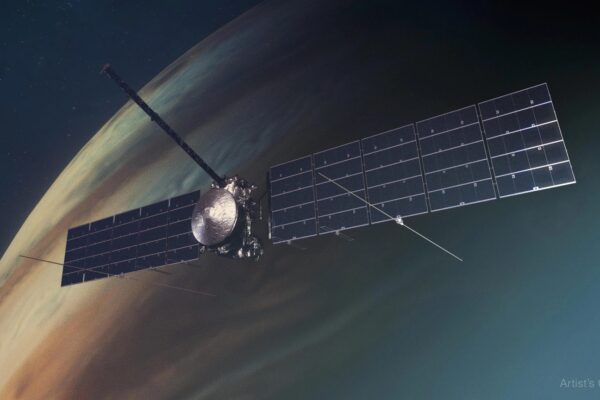The University of Texas at Austin has long been a leader in space research and exploration, making groundbreaking contributions that continue to shape the future of the final frontier. In honor of World Space Week, here are some of UT’s greatest space science discoveries and achievements during the past few years.
Tiny Microbes, Big Potential
Imagine if astronauts could grow their own food or create their own medicine in space. That’s exactly what UT engineers are exploring. Earlier this year, researchers from the Cockrell School of Engineering teamed up with Rhodium Scientific, the first space biotechnology company in the U.S., to launch specially engineered microorganisms to the International Space Station. The samples of bacteria and yeast will spend eight months on the ISS being exposed to the intense radiation of space before returning to Earth for analysis. If these microbes have survived their galactic getaway, they could one day act like tiny space factories, producing food ingredients, fuel, shelter materials and pharmaceuticals on demand — a tool that will be invaluable as NASA prepares to send astronauts to Mars.
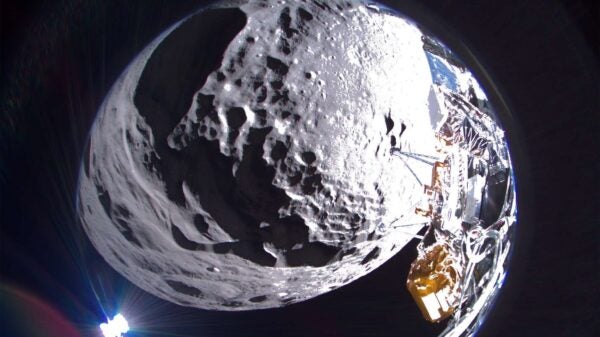
Guided by Code and Curiosity
Last year, Texas engineers helped guide a U.S. spacecraft to the surface of the moon for the first time in half a century. Aerospace engineering professor Maruthi Akella and his team developed a cutting-edge guidance algorithm that helped steer Houston-based Intuitive Machine’s lander to a precise touchdown near the moon’s south pole — a notoriously tricky spot to reach. This difficult terrain is especially intriguing to scientists due to the presence of water and ice in that area.
The team faced a significant challenge: how the lander’s shifting mass would affect its trajectory during descent. Their solution? Onboard learning logic that could calculate the spacecraft’s changing mass distribution in real time and adjust. Aided by Akella and his team, the vehicle was able to land closer to the moon’s south pole than any other previous mission. Meanwhile, Akella received one of the highest honors possible in space research: He now has an asteroid named after him. Akella’s asteroid, Maruthiakella, sits in the main asteroid belt between Jupiter and Mars.
He’s not the only member of the UT community to have his name added to a big space rock. Romy Hanna, a research associate with the Jackson School of Geosciences, received the honor for her contributions to NASA’s first U.S.-led mission to successfully return an asteroid sample to Earth. Hanna analyzed the surface and composition of the asteroid Bennu, from which the samples were collected. Former aerospace faculty members Ivo Babuska and Raynor Duncombe also have asteroids named after them.
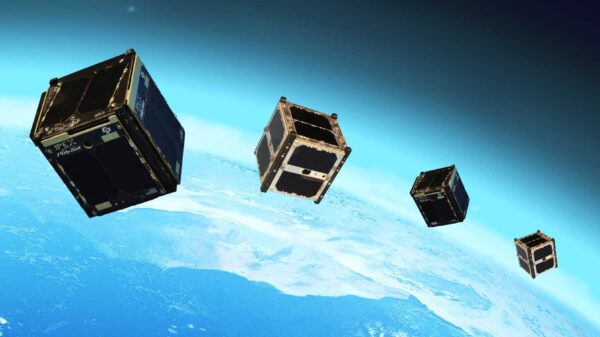
Smarter Satellites
From helping spacecraft navigate to the moon to tracking every millimeter of change on the Earth’s surface, engineers at UT are pushing the boundaries of what satellites can do. Aerospace engineering researchers are developing a new, compact satellite that uses machine learning to help spacecraft locate their positions in space, ensuring more accurate navigation and landing. Designed by students in the Texas Spacecraft Laboratory, these miniature satellites are inexpensive to build and can be easily transported into space on any rocket launch. Backed by a $1.9 million NASA partnership, this technology could one day guide missions to the moon and, eventually, Mars.
Additionally, associate professor Jingyi “Ann” Chen will be helping NASA track nearly imperceptible changes on the Earth’s surface using a first-of-its-kind dual radar satellite. Launched in July, the satellite detects shifts as small as fractions of an inch — measuring everything from ecosystem disturbances to melting ice sheets and rising sea levels to earthquakes, volcanic eruptions and landslides. Starting next year, Chen will join the team working to improve the algorithms used to collect and share this data. That information will help manage natural resources, respond to environmental hazards, and give scientists better insights into climate change and the Earth’s crust.
Finally, assistant professor Thomas Underwood is developing a plasma propulsion system that will allow satellites to propel and refuel themselves while in low orbit by harvesting molecules and solar energy from the atmosphere. This groundbreaking development would eliminate the need to carry fuel, which is often made from rare gases, on board. He’s also designing a new-gen heat shield that uses smart metamaterials to help spacecraft maintain radio signals during hypersonic flight and atmospheric reentry, solving the problem of communication blackouts that have plagued space missions for decades.
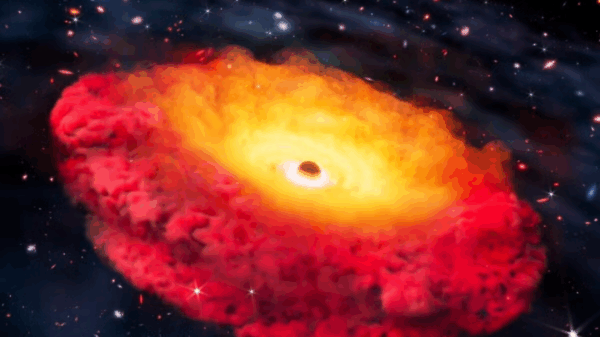
Unlocking the Mysteries of the Universe
Since the launch of the James Webb Space Telescope (JWST) in December 2021, UT astronomers have made deep space discoveries ranging from the universe’s earliest (and therefore most distant) black hole — a monster chasm 300 million times as massive as our sun — to dark stars and one of the earliest galaxies ever observed. Astronomy professor Steven Finkelstein, who served as principal investigator on the project, named the galaxy for his daughter, Maisie, after spotting it for the first time on her birthday.
Another team of researchers, including those from UT, is studying a nearby starburst galaxy in the Ursa Major constellation that’s forming stars 10 times as fast as the Milky Way is. And professor Harriet Dinerstein is part of an international team capturing new details at the heart of the visually stunning Butterfly Nebula, one of the galaxy’s best studied planetary nebula, including its elusive central star. She’s also studying the equally gorgeous dying star, the Ring Nebula.
More discoveries probably are in store for UT, which has been allocated 10% of total observing time, or more than 800 hours, on the JWST during the next year.
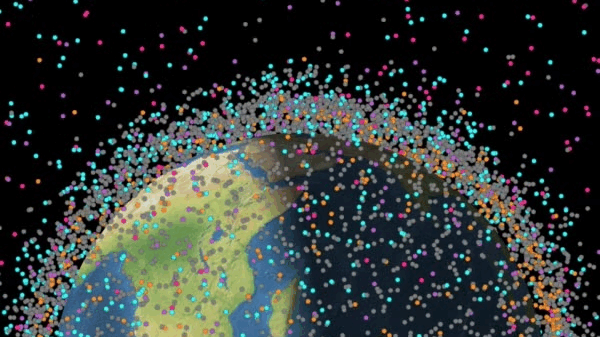
Cleaning up Space, One Orbit at a Time
Tens of thousands of fragments from old satellites and probes ranging from the size of a speck of paint to a school bus can be found within Earth’s orbit. Moving 10 times as fast as the speed of a bullet, this debris puts the satellite system we rely on to power our voice and text communications, financial systems and weather warnings in danger — not to mention posing a threat to the International Space Station and future space missions.
Moriba Jah, an aerospace engineering associate professor and MacArthur “genius grant” recipient, is leading the charge on cleaning up space, creating a real-time, publicly accessible map that monitors space pollution and predicts collisions, promoting the use of reusable and recyclable satellites and rockets, and proposing orbital cleanup programs. Jah’s work earned him the rare honor of election to Scotland’s National Academy, the Royal Society of Edinburgh, and a spot on the U.S. Air Force Scientific Advisory Board.
Exploring Beneath a Planet’s Surface
When NASA’s Europa Clipper blasted off for its decade-long mission to explore the habitability of Jupiter’s icy moon Europa, it carried a piece of UT ingenuity with it. Ice-penetrating radar technology developed by the University of Texas Institute for Geophysics (UTIG), a research unit within the Jackson School, will help scientists peer beneath the moon’s thick ice shell to the vast ocean miles below the surface — an ocean that, with the right combination of organic compounds and energy, could potentially sustain life.
UTIG’s radar technology, pioneered by research professor Donald Blankenship, dates to the early 1990s, when researchers used it to study ice sheets in Antarctica and Greenland. Blankenship and his team are also collaborating with the European Space Agency and Italian Space Agency on their joint mission to explore the subsurface oceans of Europa and other Jupiter moons Ganymede and Callisto, which may also be hospitable to life.
Then there’s Mars. For decades, scientists have been fascinated by the mystery of why the red planet’s once-abundant rivers, lakes and oceans disappeared and, just as importantly, where all that water went. Mohammad Afzal Shadab and Eric Hiatt, who recently graduated from UT with doctoral degrees, have solved a piece of that puzzle. Using a computer model they developed, the duo estimated that water on early Mars took 50 to 200 years to seep into the planet’s underground aquifers — a stark contrast to Earth, where this process takes only a few days — and rarely resurfaced. Shadab and Hiatt’s findings suggest that the amount of water that sank underground could have been enough to cover the planet in at least 300 feet of water. And that water may very well still be there. This hidden reservoir could one day support future NASA explorers as they attempt to create a sustainable settlement among the stars.

